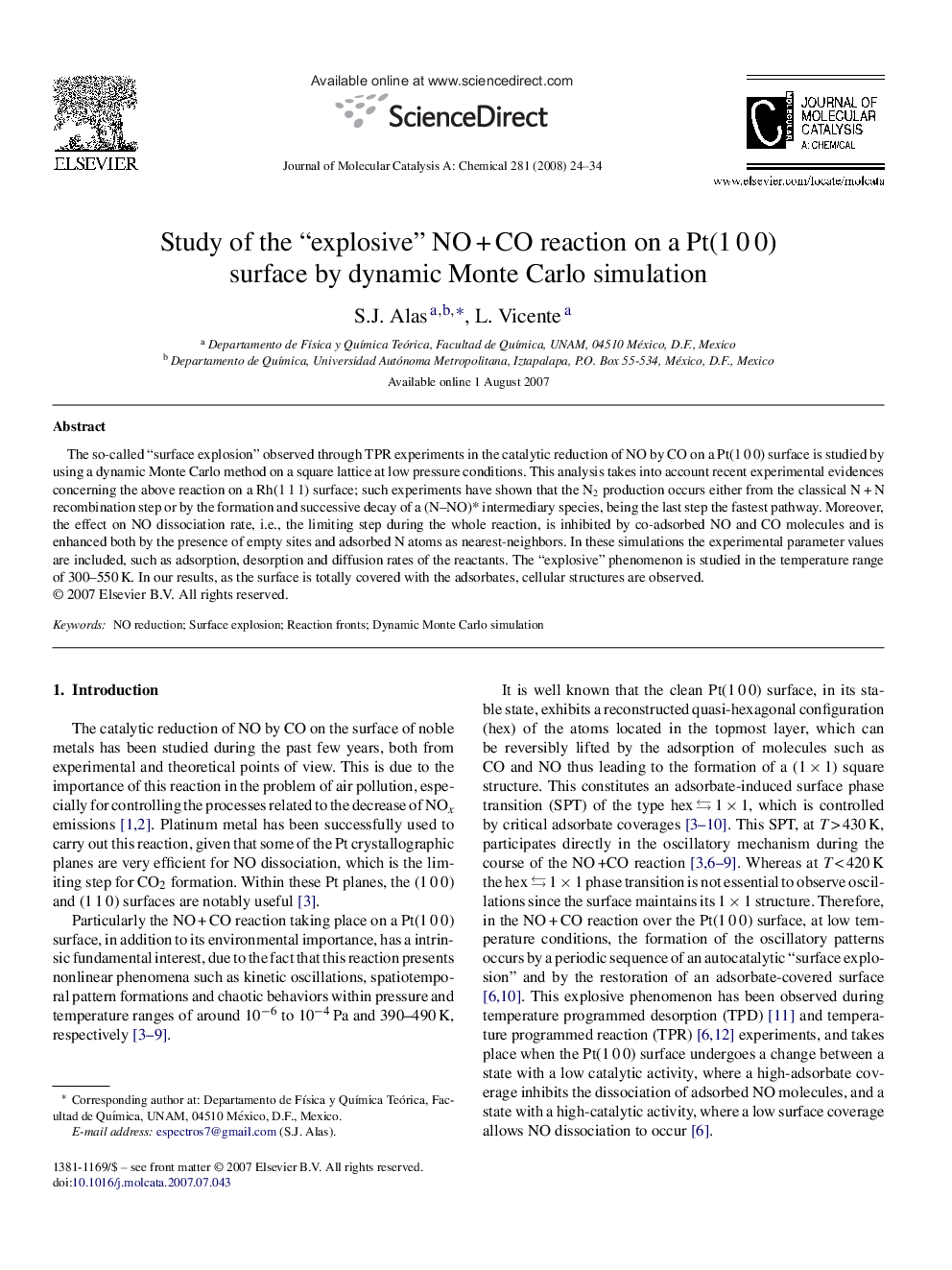| Article ID | Journal | Published Year | Pages | File Type |
|---|---|---|---|---|
| 68177 | Journal of Molecular Catalysis A: Chemical | 2008 | 11 Pages |
Abstract
The so-called “surface explosion” observed through TPR experiments in the catalytic reduction of NO by CO on a Pt(1Â 0Â 0) surface is studied by using a dynamic Monte Carlo method on a square lattice at low pressure conditions. This analysis takes into account recent experimental evidences concerning the above reaction on a Rh(1Â 1Â 1) surface; such experiments have shown that the N2 production occurs either from the classical NÂ +Â N recombination step or by the formation and successive decay of a (N-NO)* intermediary species, being the last step the fastest pathway. Moreover, the effect on NO dissociation rate, i.e., the limiting step during the whole reaction, is inhibited by co-adsorbed NO and CO molecules and is enhanced both by the presence of empty sites and adsorbed N atoms as nearest-neighbors. In these simulations the experimental parameter values are included, such as adsorption, desorption and diffusion rates of the reactants. The “explosive” phenomenon is studied in the temperature range of 300-550Â K. In our results, as the surface is totally covered with the adsorbates, cellular structures are observed.
Related Topics
Physical Sciences and Engineering
Chemical Engineering
Catalysis
Authors
S.J. Alas, L. Vicente,
